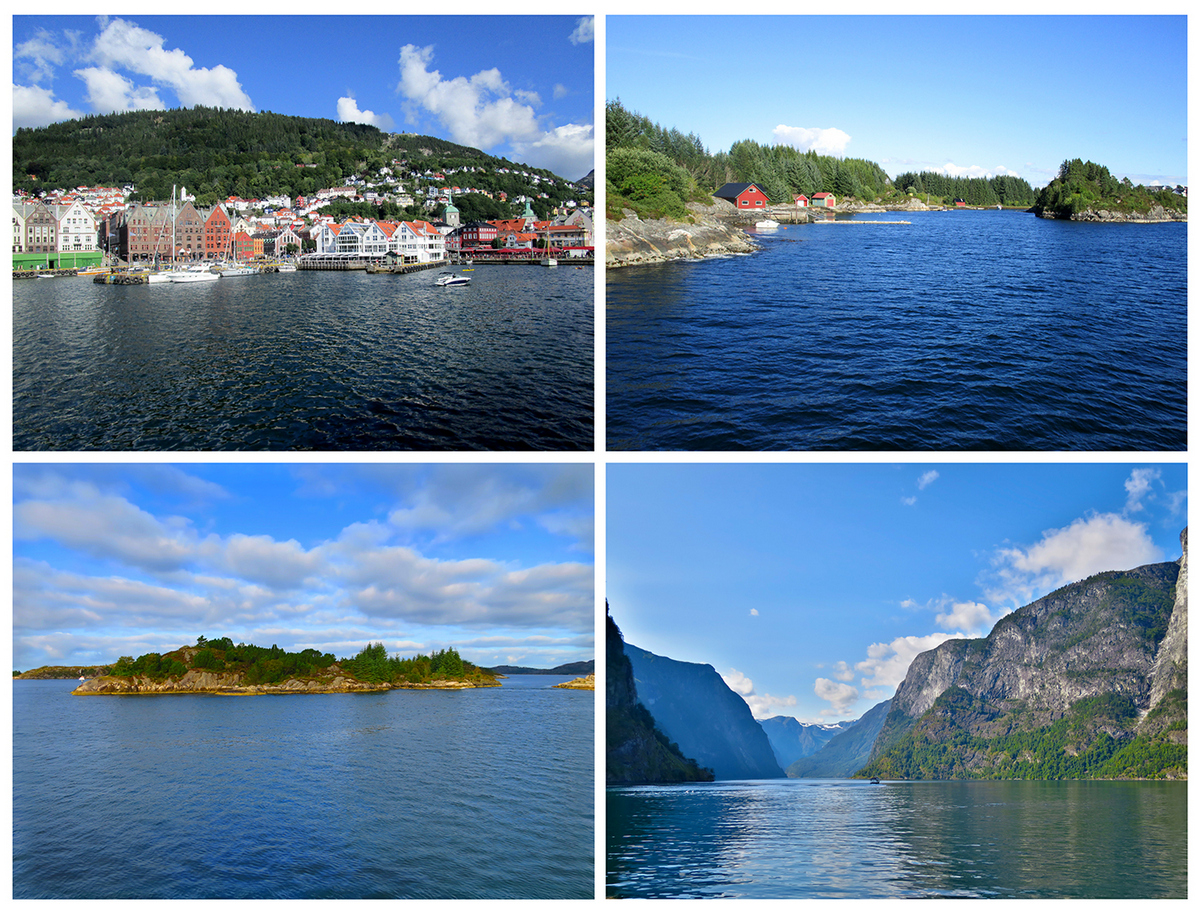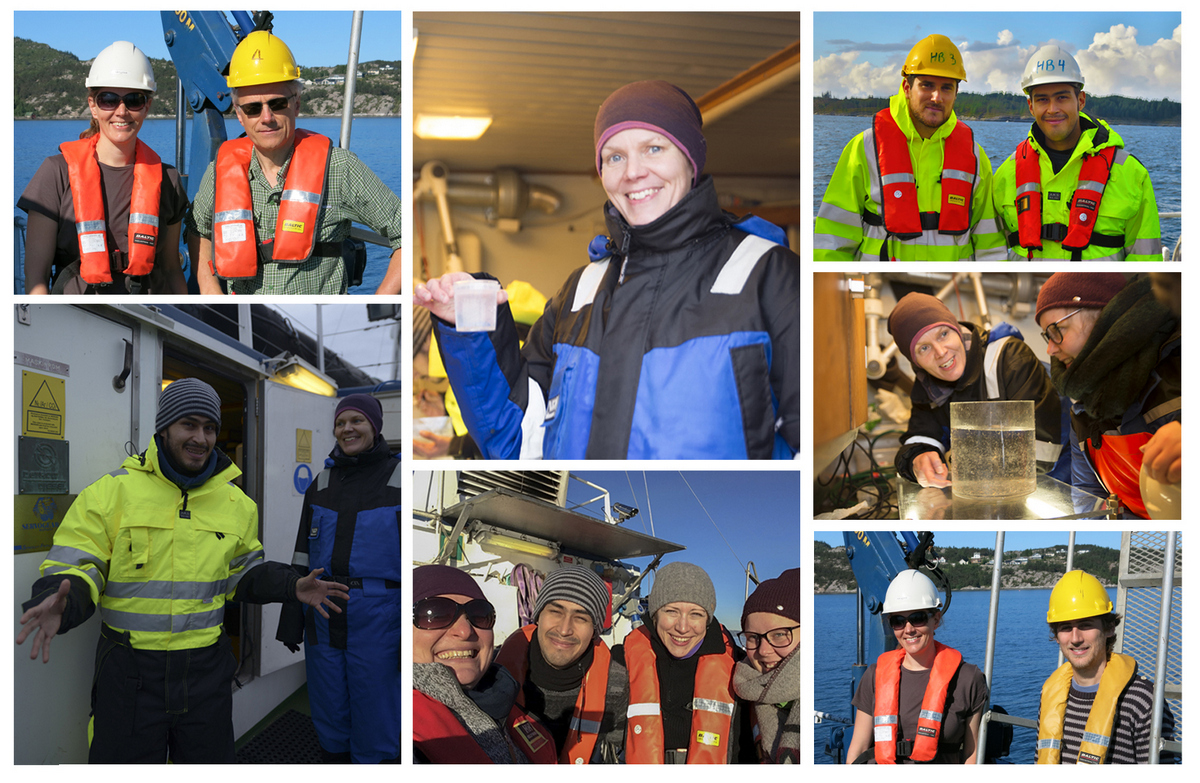The end of the year is always a crazy time full with work deadlines and holiday planning, but if one can find a few minutes in between last-minute shopping and gift-wrapping, the last days of December can also offer the opportunity to reflect on past and current experiences and what we have learned from them. It is also a special time for closure, so it feels natural that it coincides this year with the end of HYPNO, one of the projects of the Invertebrate collections funded by the Norwegian Taxonomy Initiative.
For the last three years, project HYPNO (Hydrozoan pelagic diversity in Norway) has been documenting and DNA-barcoding the diversity of hydromedusae and siphonophores in Norwegian waters. We have learned a lot about the distribution of these animals in the process, especially since we have come face to face (or rather face to tentacle) with more than 1100 specimens from all parts of the country.

Representative species of the groups within Hydrozoa that were the object of study of HYPNO (from left to right and top to bottom): Amphinema rugosum (Anthoathecata), Mitrocomella polydiademata (Leptothecata), Lensia conoidea (Siphonophorae Calycophorae), Agalma elegans (Siphonophorae Physonectae), Botrynema ellinorae (Trachymedusae), Bathykorus bouilloni (Narcomedusae). Pictures: Luis Martell and Aino Hosia.
Telling all these organisms apart was not always an easy task, but thanks to a combination of traditional taxonomy and genetic methods we have been able to identify more than 120 species, including several new records for Norway and a couple of species that had gone unnoticed to the world until today. The project was very successful in getting useful DNA sequences for the majority of these species, which will facilitate the identification of hydrozoans in the future, and that will be available for everybody to use through the online platform of the Barcoding of Life initiative. All the records gathered during the project will also be available to the public (through the interactive maps of Artskart) and a collection of specimens will be stored at the University Museum of Bergen as a reference for anyone interested.
Additionally, keep an eye open for HYPNO’s most striking results that can be found in several scientific articles (published and in various stages of preparation), and for the project’s last updates in social media.
Without a doubt, HYPNO owes much of its success to the combined efforts of all the individuals and institutions that have collaborated in the project in one stage or another. NorBOL, GooseAlien, NorAmph, and Arts- og naturtypekartlegging av Sognefjorden are only some of the projects with which HYPNO has shared samples, experiences, and field trips. Collecting the animals and curating the specimens and data would not have been possible without the help of the crew working in the research vessels that hosted us and the technical staff at the DNA lab and the invertebrate collections of the museum.

HYPNO included samples from all over Norway, but we particularly enjoyed our regular sampling trips in the amazing Western Norwegian coast. Pictures: Luis Martell, Joan J. Soto Àngel.
Many records for the project came from friends and colleagues working in other institutions and universities in Norway and abroad, all of whom were eager to share their knowledge and time with us in this hypnotic adventure of Norwegian jellyfish.

We had always a great time jelly-hunting in the sea! Pictures: Luis Martell, Joan J. Soto Àngel, Anne-Helene S. Tandberg.
HYPNO may now be coming to an end, but this doesn’t mean that our work on Norwegian hydrozoans is finished. On the contrary, the Invertebrate Collections have been granted a new project starting next year and focusing again on these fascinating animals. We hope that the new project NORHYDRO will be as rewarding as HYPNO, and we know it will be at least as fun: time flies by so quickly when jellyfish and good friends are involved!
-Luis Martell and Aino Hosia
Some suggested reading related to the project
Schuchert P, Hosia A, and Leclere L. 2017. Identification of the polyp stage of three leptomedusa species using DNA barcoding.
Martell L, Tandberg AHS, and Hosia A. 2018. The illusion of rarity in an epibenthic jellyfish: facts and artefacts in the distribution of Tesserogastria musculosa (Hydrozoa, Ptychogastriidae). Helgoland Marine Research 72(1):12.

